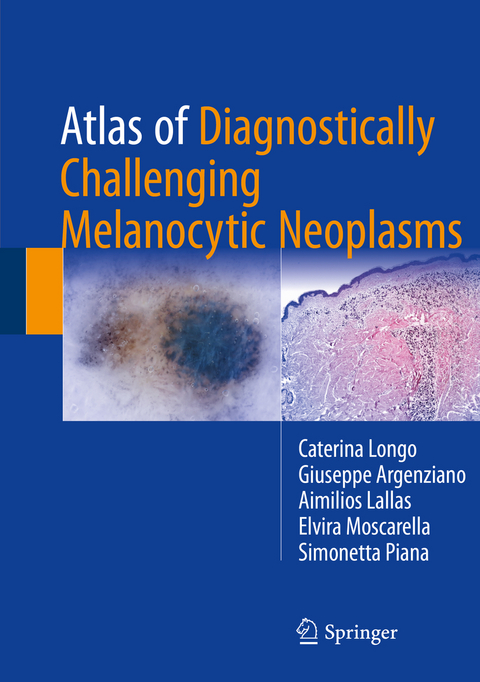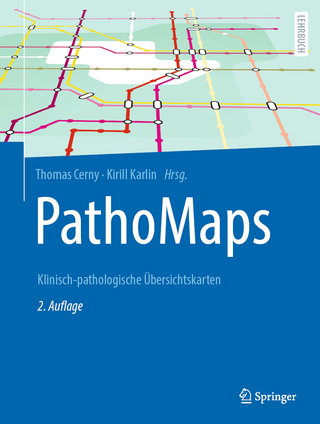
Atlas of Diagnostically Challenging Melanocytic Neoplasms
Springer International Publishing (Verlag)
978-3-319-48651-2 (ISBN)
This atlas provides a clear, concise overview of the most challenging circumstances faced by clinicians and pathologists when dealing with melanocytic neoplasms. The book is structured as a case series; for each case, the clinical and dermoscopic appearances are presented, accompanied by a brief but comprehensive description and compelling histopathologic images. When available, in vivo confocal microscopy images are also included to highlight additional diagnostic clues. Identification of key messages and selected references will further guide the reader in the diagnosis and management of the neoplasm under consideration.
It is well known that melanocytic lesions can be difficult to interpret. Some lesions show an ambiguous combination of morphologic criteria, and in these cases interpretation entails a high degree of subjectivity that results in low interobserver agreement even among expert pathologists. This atlas demonstrates how the addition of clinical information, including that provided by dermoscopy, can assist in reaching a more confident diagnosis.
Caterina Longo is a dermatologist specialized in diagnosis and treatment of skin cancers. Since 2005 she mainly researches in noninvasive diagnosis in dermato-oncology, with a focus on melanoma and pigmented skin lesions study by non invasive methods, such as dermoscopy and confocal microscopyHer scientific interest to link dermoscopic and confocal morphologies of melanoma with genetic and proteomic profiles, she joined the “Center for Applied Proteomics and Molecular Medicine”, George Mason University (Virginia,USA) directed by Dr. Liotta and Dr Petricoin in 2008. Besides skin oncology, she is interested in the application of confocal microscopy to assess the skin aging and to monitor the efficacy of treatments. Since 2011, she works as scientific consultant at the skin cancer unit of ASMN-IRCCS Reggio Emilia, for the implementation of in vivo and ex vivo confocal microscopy. So far, she published 162 indexed papers on these topics. She won the IDS prize as best young researcher in 2015.Giuseppe Argenziano is Associate Professor and Head of the Dermatology Unit at the Second University of Naples, Italy, and Coordinator of the Skin Cancer Unit at the Research Hospital “Arcispedale Santa Maria Nuova IRCCS” in Reggio Emilia, Italy. His main research field is dermato-oncology, being author of numerous scientific articles and books concerning dermoscopy, a new technique improving the clinicians detection of benign and malignant skin tumors. As coordinator of a Skin Cancer Unit, he has established a successful tertiary, multidisciplinary, referral center particularly devoted to the diagnosis and management of patients with skin tumors. Over the past 20 years he has supervised over 100 foreign students and 40 residents in Dermatology, established scientific collaborations with more than 200 colleagues from more than 30 Nations, and organized more than 50 national and international scientific activities, courses and conferences (such as the Consensus Net Meeting on Dermoscopy and the First Congress of the International Dermoscopy Society). He is co-founder and past president of the International Dermoscopy Society; project leader for the development of a high diagnostic technology oncologic center at the Arcispedale Santa Maria Nuova IRCCS in Reggio Emilia; faculty member of the Master of Science in Dermoscopy and Preventive Dermato-oncology, and the Short Course in Dermoscopy, two e-learning courses by the Medical University of Graz and by the Cardiff University, respectively; and member of the Editorial Board of the Journal of the American Academy of Dermatology. Professor Argenziano has authored more than 400 full scientific articles and produced landmark primary publications and books in in the field of dermoscopy. Over the past 20 years he has been invited as speaker and/or chairman in more than 500 national and international conferences in the field of dermatology. His combined publications have received a sum total of 7198 citations with an h-index value of 44 (Scopus 01/2016).
Preface.- 1 Introduction to challenging melanocytic neoplasms.- 2 Melanocytic nevi in patients with multiple nevi.- 3 Spitzoid lesions in adults.- 4 Flat solitary pigmented lesions in elderly patients.- 5 Lesions with regression.- 6 Sclerosing nevi.- 7 Melanoma incognito.- 8 Melanoma on acral site.- 9 Melanoma on the face.- 10 Conclusions of the editors on melanocytic neoplasms.
"A series of dermatoscopically difficult cases are presented along with their clinical and histological findings are presented in this book, along with a brief history for each vignette. There is a short description of the subtle dermatoscopic findings that should alert clinicians to the correct diagnosis. ... The audience is dermatologists, specifically experts in dermoscopy." (Patricia Wong, Doody's Book Reviews, April 26, 2019)
| Erscheinungsdatum | 06.09.2017 |
|---|---|
| Zusatzinfo | VIII, 145 p. 207 illus. in color. |
| Verlagsort | Cham |
| Sprache | englisch |
| Maße | 178 x 254 mm |
| Themenwelt | Medizin / Pharmazie ► Medizinische Fachgebiete ► Chirurgie |
| Medizin / Pharmazie ► Medizinische Fachgebiete ► Dermatologie | |
| Medizin / Pharmazie ► Medizinische Fachgebiete ► Onkologie | |
| Studium ► 2. Studienabschnitt (Klinik) ► Pathologie | |
| Schlagworte | Confocal microscopy • Dermatology • Dermoscopy • Histopathology • Medicine • Medicine: general issues • Melanocytic Nevi • melanoma • Pathology • Recurrent nevi • Sclerosing nevi • Spitz/Reed nevi • surgical oncology |
| ISBN-10 | 3-319-48651-9 / 3319486519 |
| ISBN-13 | 978-3-319-48651-2 / 9783319486512 |
| Zustand | Neuware |
| Haben Sie eine Frage zum Produkt? |
aus dem Bereich


